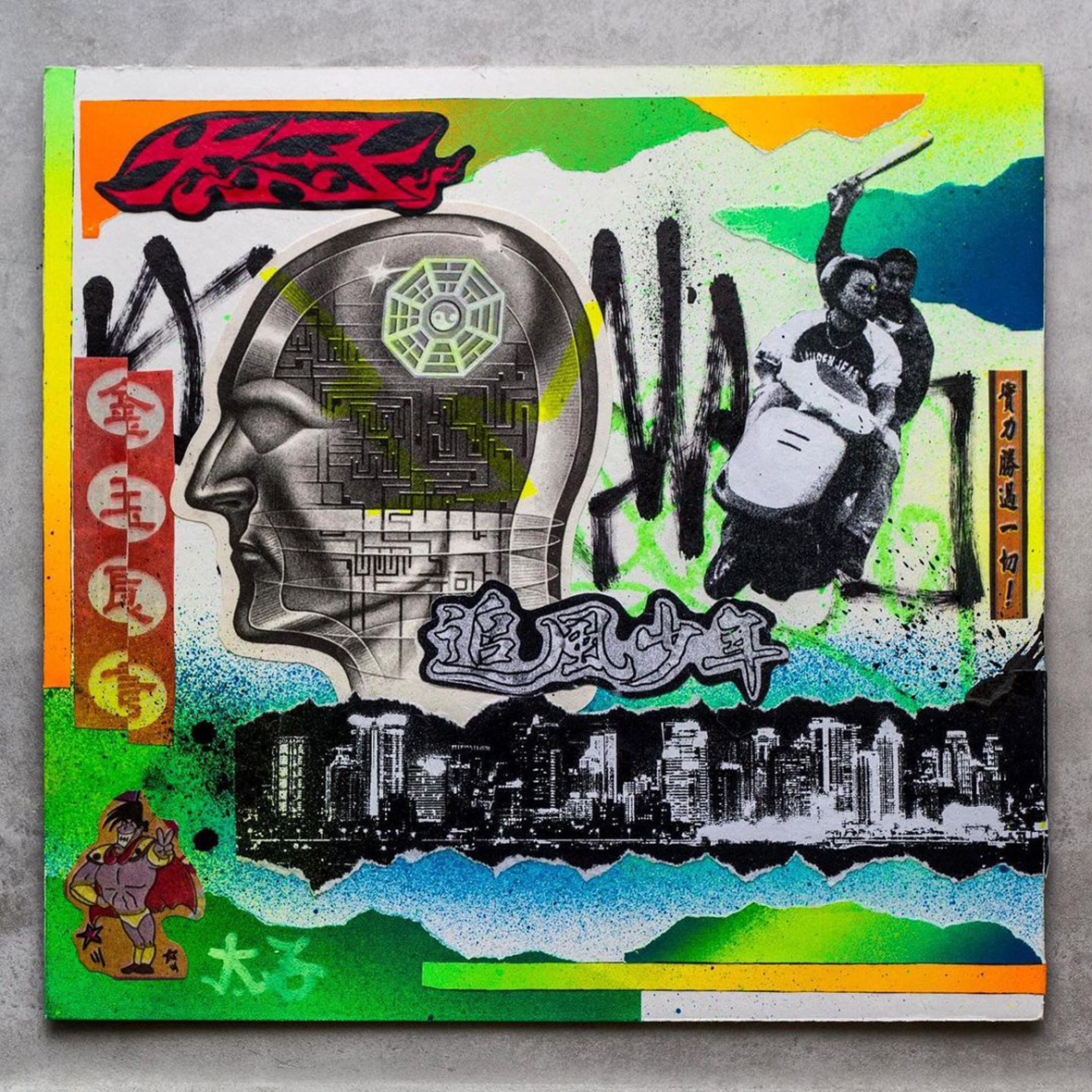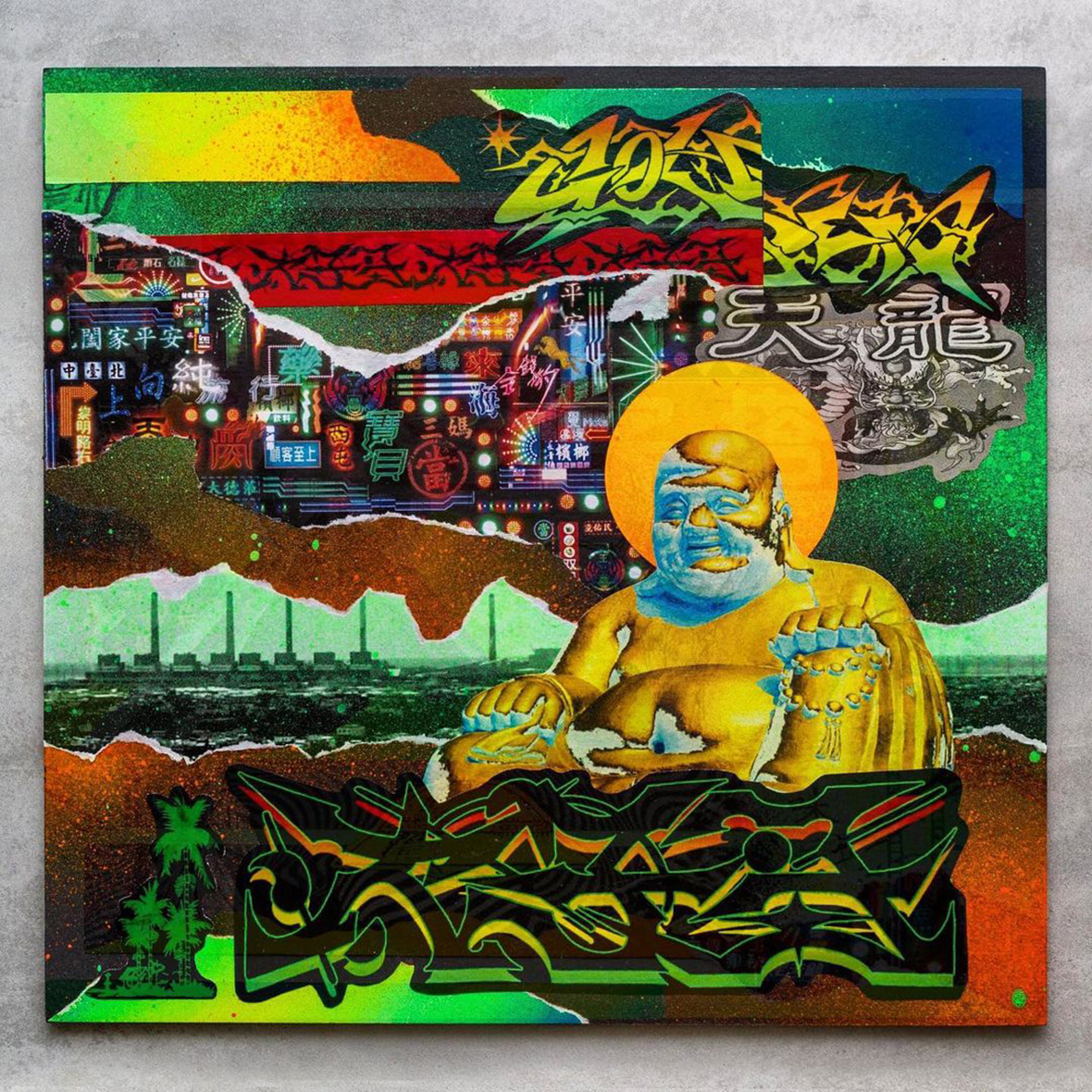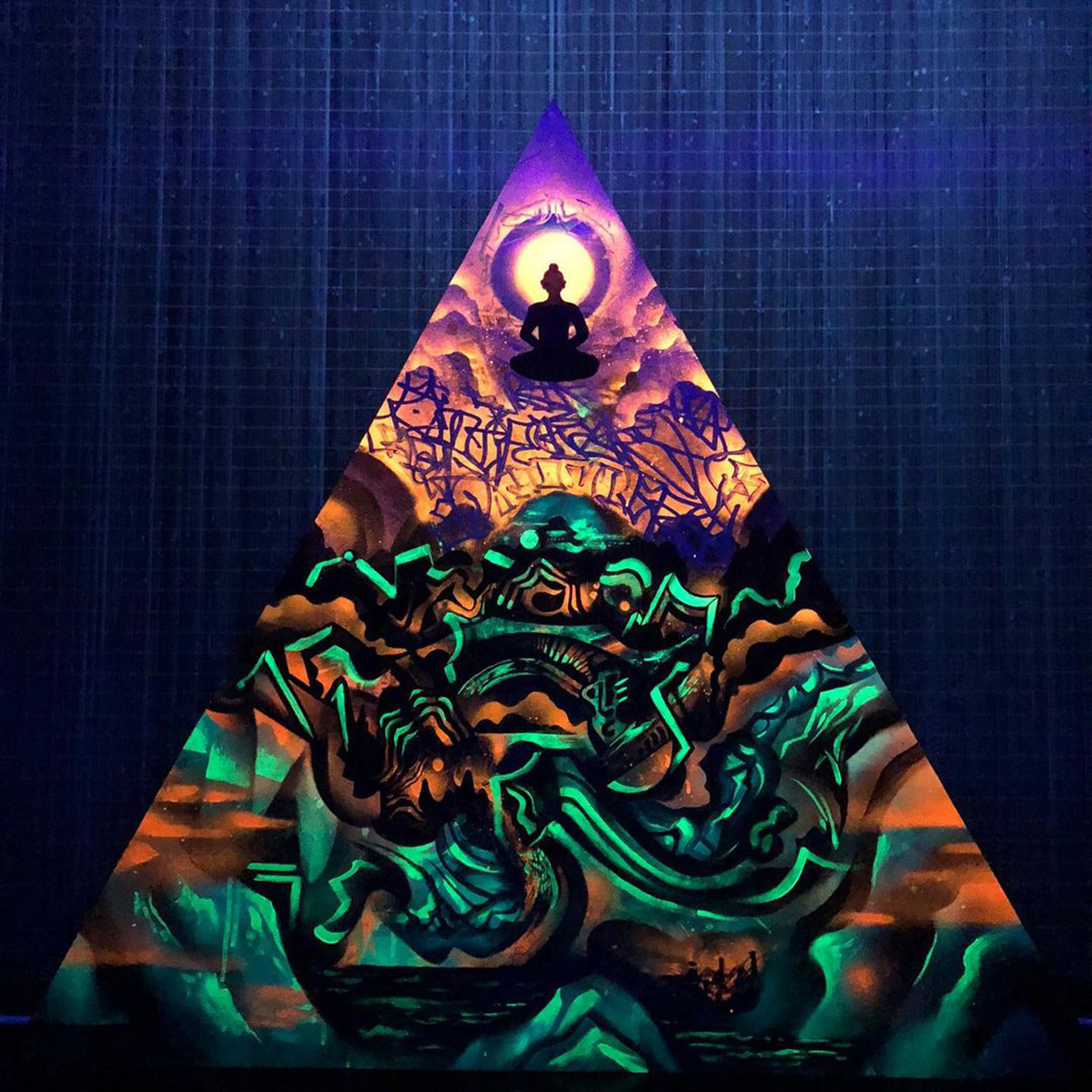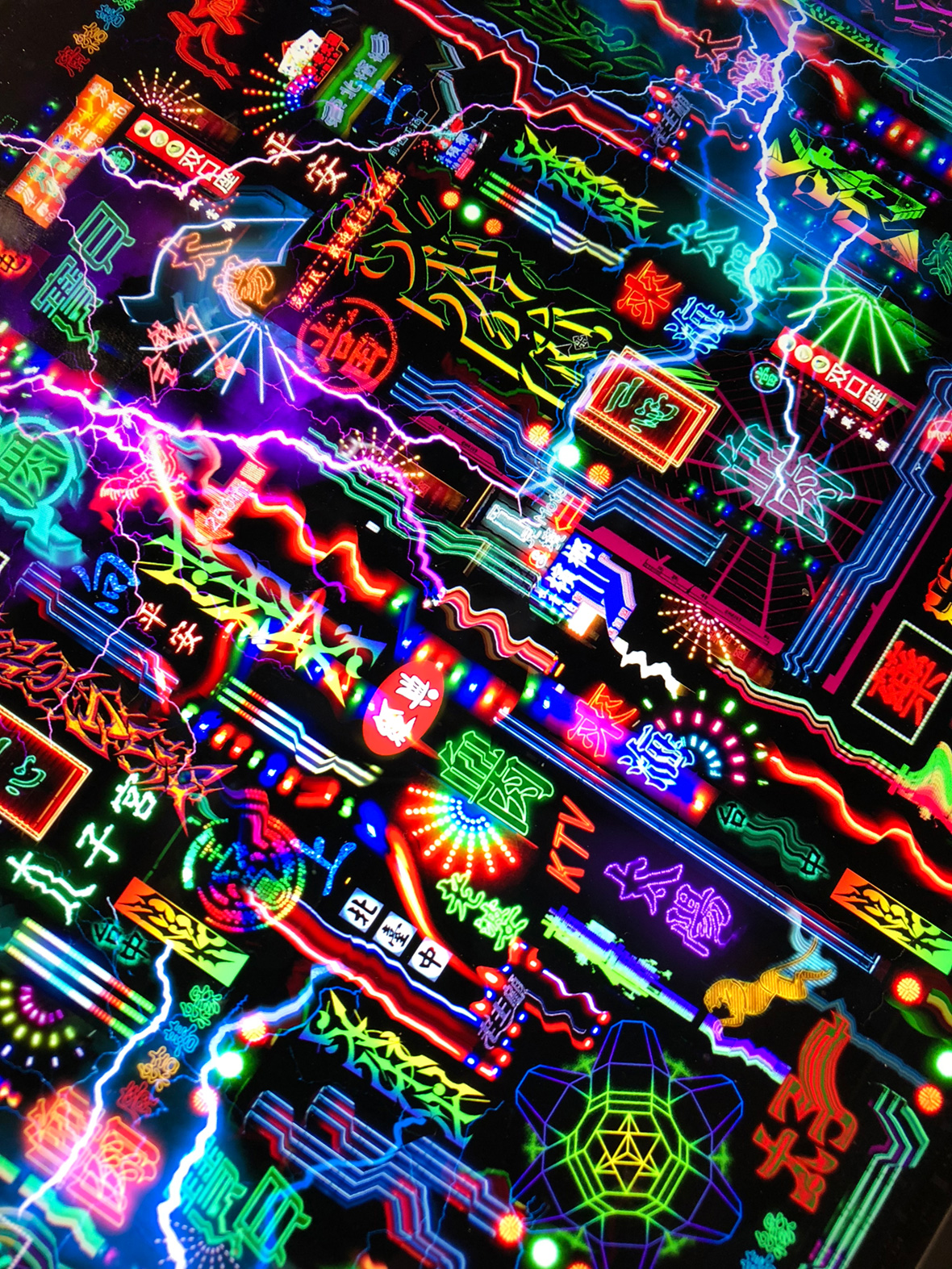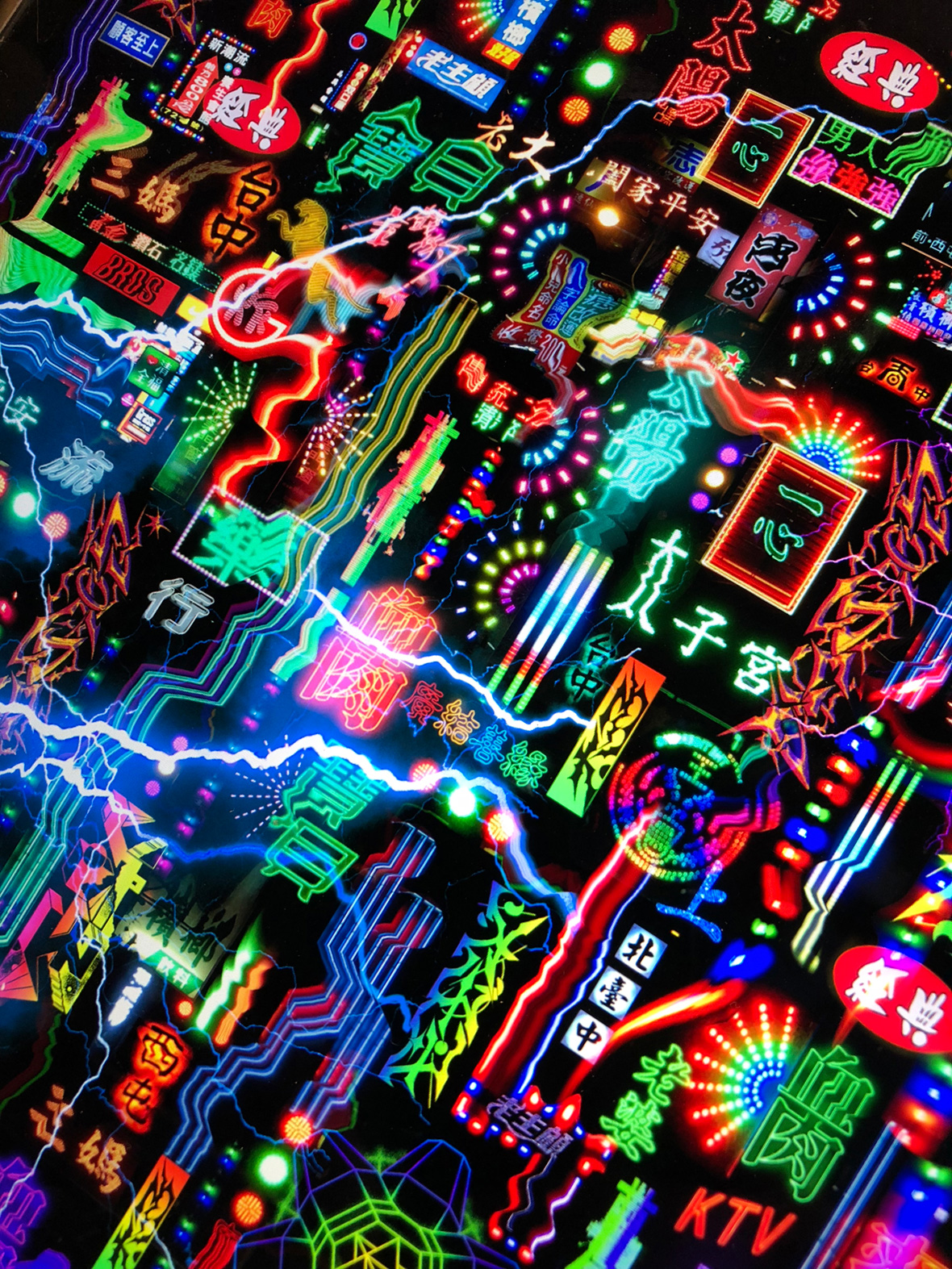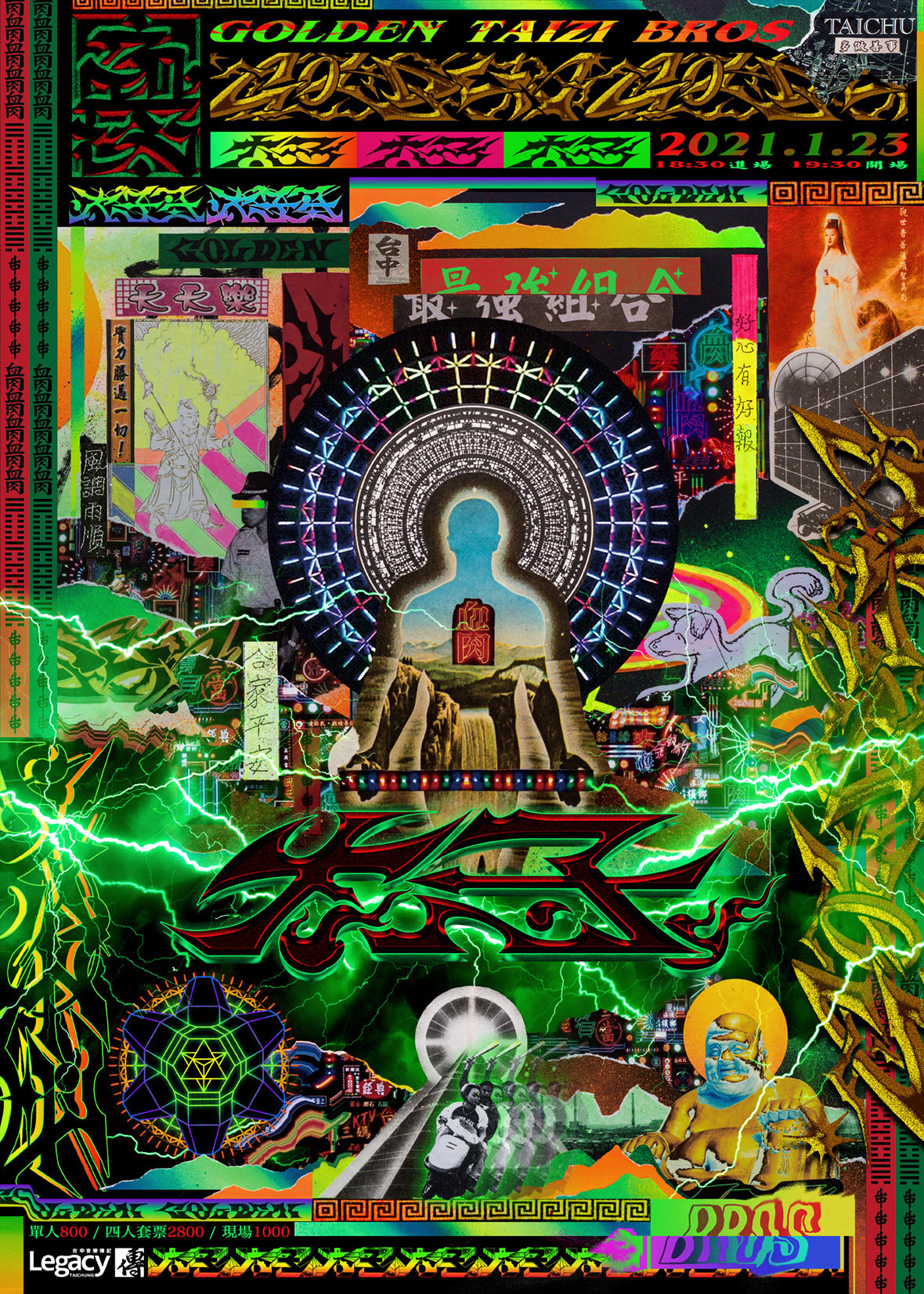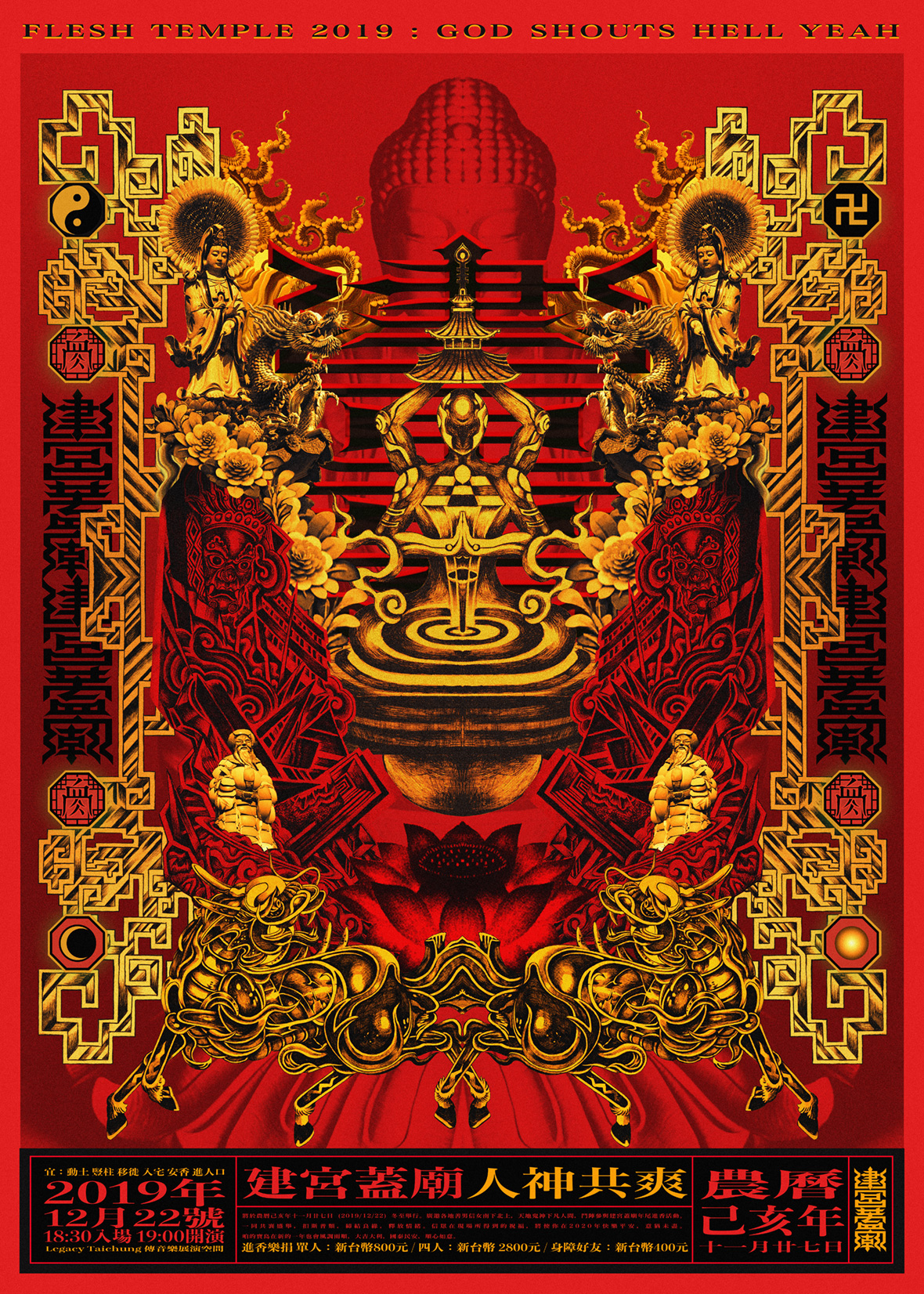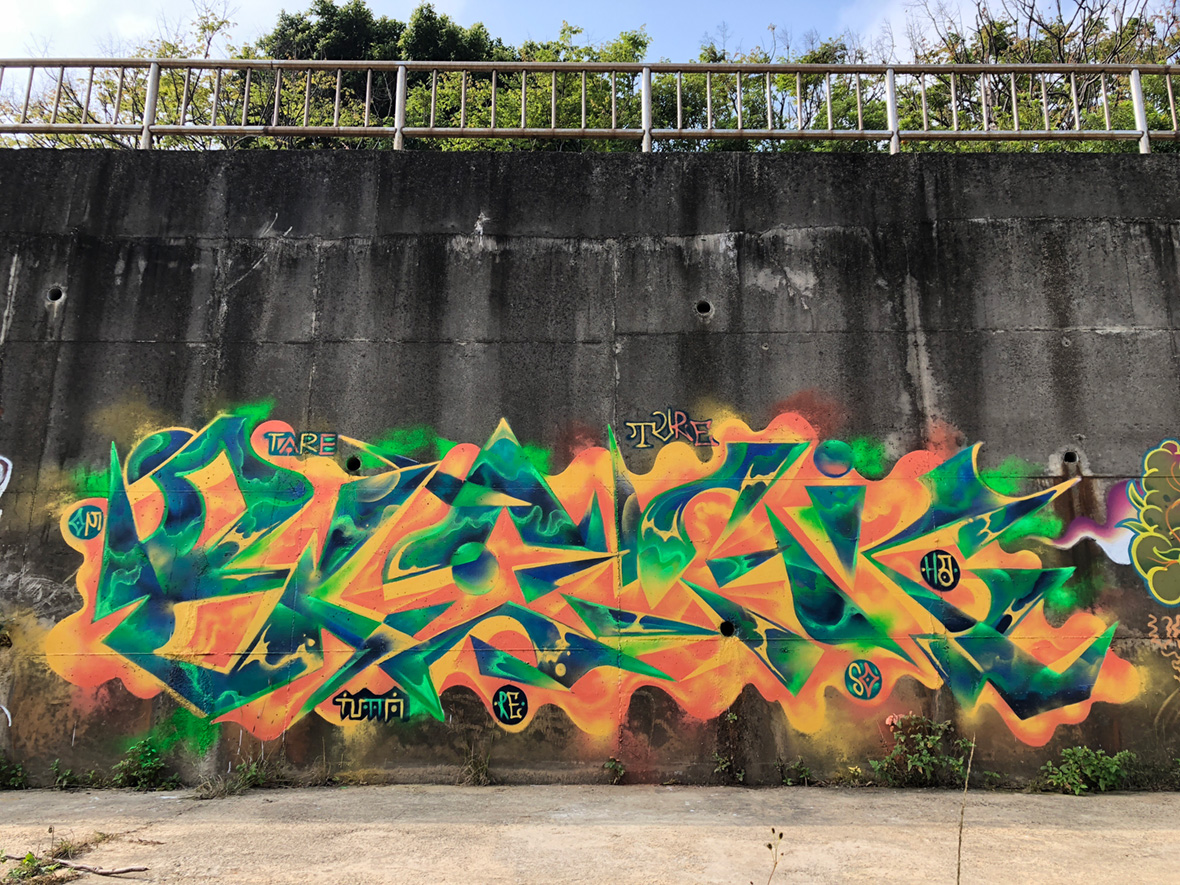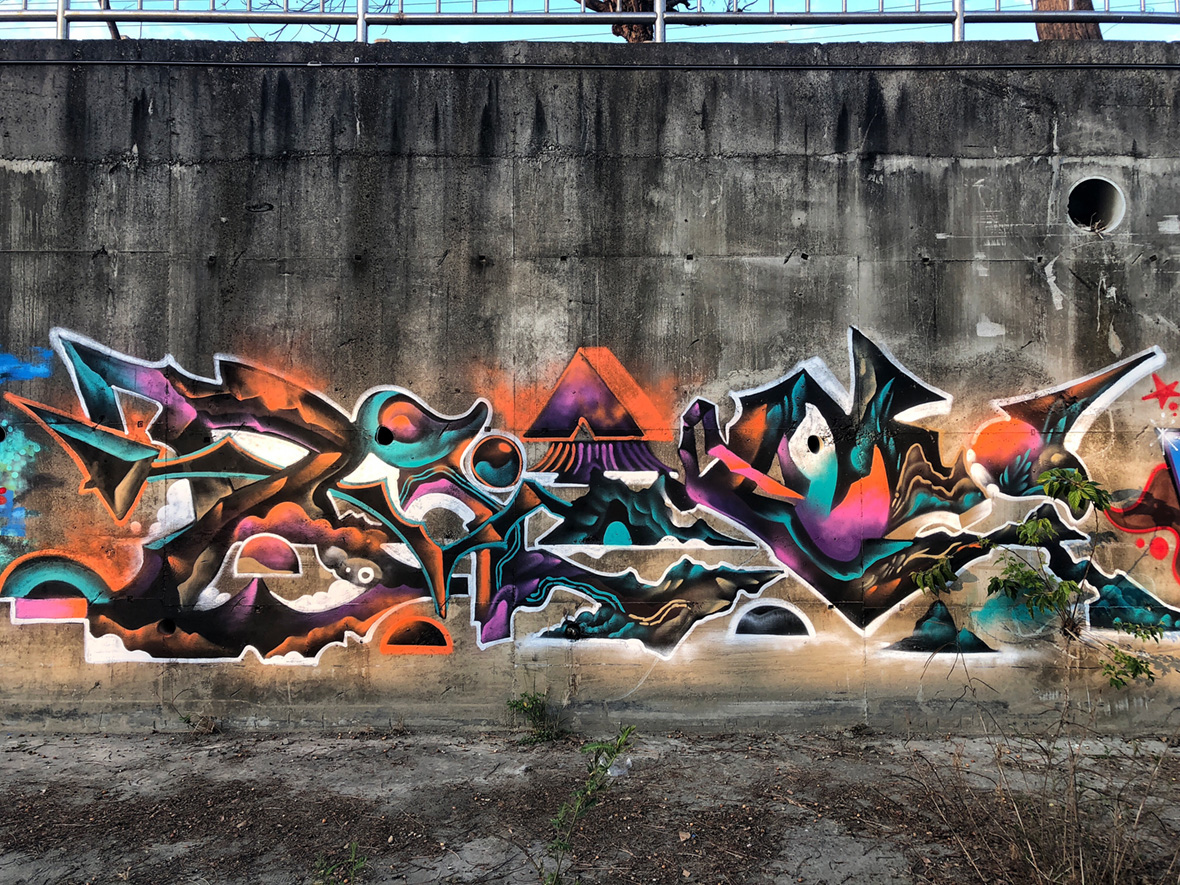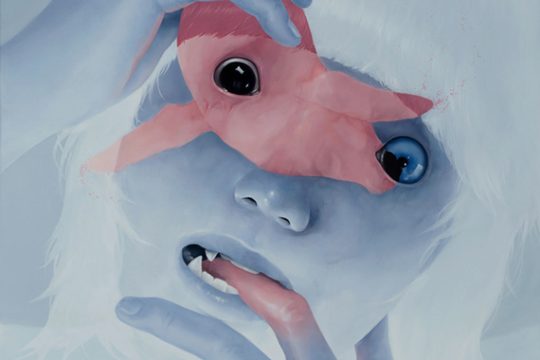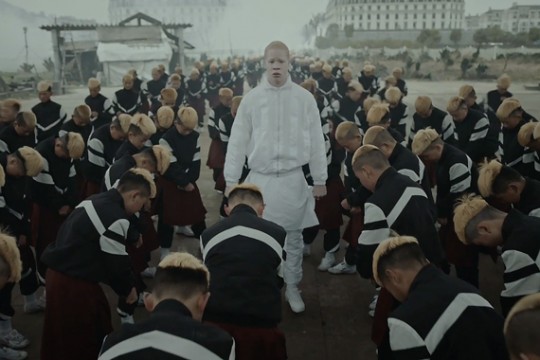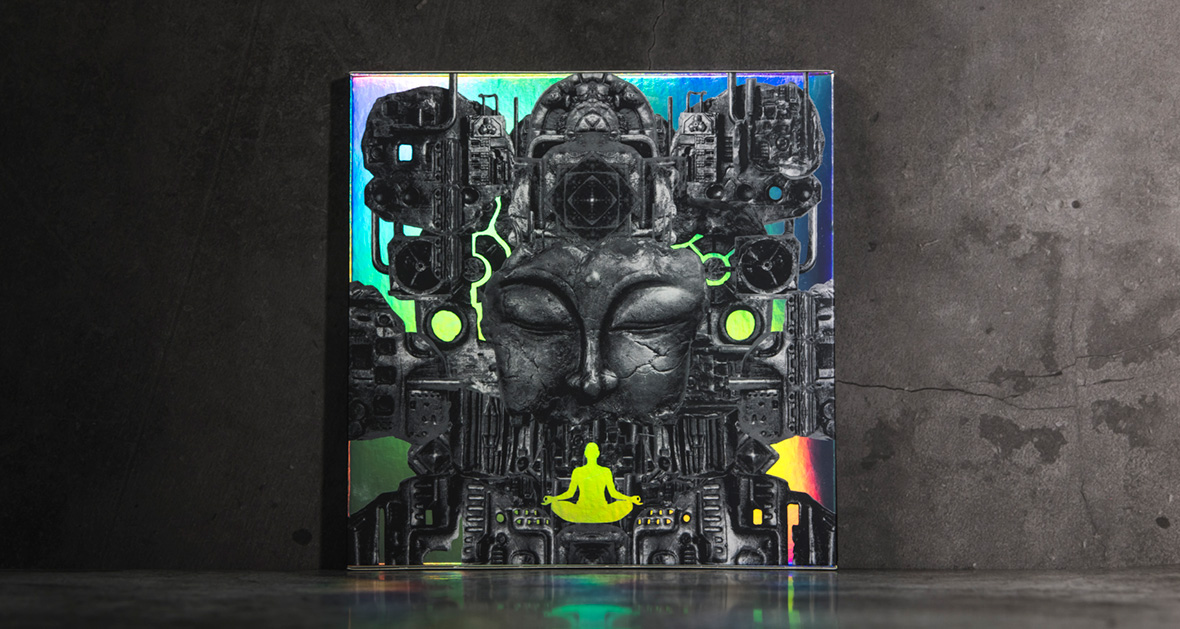
Novelty is undeniably important in art. The never-ending pursuit of the new—new styles, new mediums, new thoughts—is one of the main reasons art stays exciting. But using these new ideas to pull traditional culture into modern times can help us stay connected with the past. Taiwanese artist Yi-Shang Zhao’s work is a prime example of this, blending contemporary graffiti and modern graphic design with ancient Chinese techniques and traditional religious art.
毋庸置疑,新鲜感对于艺术创作来说至关重要。人们总在不断追求创新——新风格、新媒介、新思想,这也是艺术总是令人期待的原因之一。但同时,运用新鲜的方式将传统与现代相结合,有助我们与过去衔接。台湾艺术家 Blackzao 的作品正是一个绝佳的范例,他正将现代的涂鸦和平面设计与古老的中国工艺下的传统宗教艺术融会贯通。
Zhao, who uses the alias Blackzao, works across multiple mediums. He spray paints on walls and canvas, creates graphic design and digital illustration, paints with acrylics and brushes, and assembles intricate collages. Within these disparate mediums, he pushes his style in different directions. At first, it may seem scattered, but there’s a method to the madness. Across his wide-ranging works, consistent interests and themes emerge. The same psychedelic colors, mountainous landscapes, prolific text, and Buddhist icons appear repeatedly.
Blackzao 的跨媒介创作包括用喷漆在墙壁和画布上绘画、平面设计和数字插图技艺、以及丙烯颜料和画笔,甚至偶尔还会运用到拼贴画的创作手法。这些不同媒介,促使他的作品朝着更多元的方向发展。这些不同领域的创作看似分散,实际上却是“形散而神不散”。迷幻的色彩、山野景观、丰富的文字和佛教元素,贯穿在他的每一幅作品中。
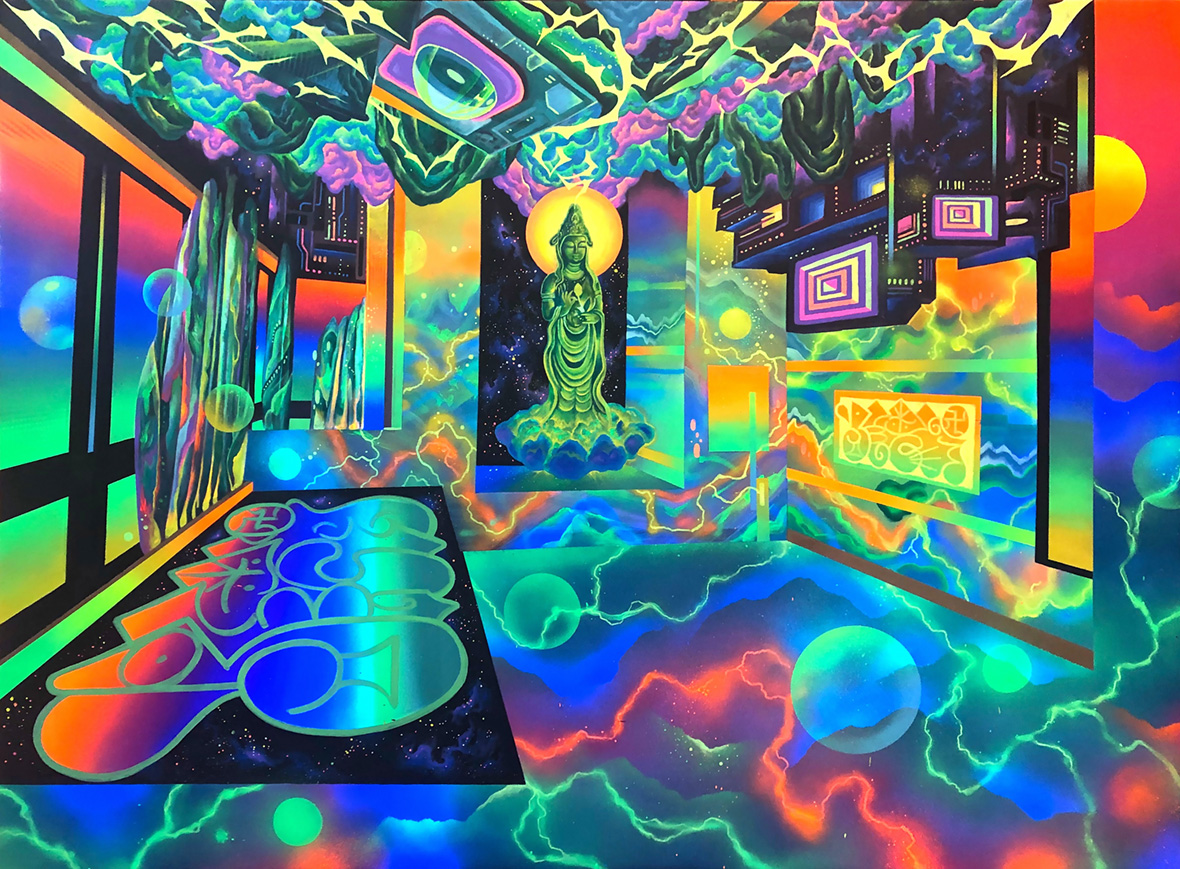
For the burgeoning artist, it all started with graffiti. As a teen in Taichung, Zhao became enamored with the spray can after being exposed to skateboarding and hip-hop culture. Back then, all of his work was written in English, with an aesthetic thoroughly influenced by American wildstyle and old-school graffiti. But his interest in graf led to a broader engagement with letterform.
“In the beginning, I wrote in a traditional graffiti lettering style, but I added the stylistic strokes and structures of Chinese characters to my English letters,” Zhao says. Learning graphic design and digital art in university furthered his knowledge of fonts and scripts, which he happily added to his arsenal of lettering styles. Calligraphy and type-driven art became a consistent feature of his work.
他的艺术生涯起步于涂鸦创作。少年时期,在台中生活的 Blackzao 在接触滑板和嘻哈文化后,就迷上了涂鸦喷漆。那时,他的所有作品都是以英语字体创作,其美学风格也完全是受美国野性涂鸦(Wildstyle) 和 old-school 风格的影响。但他对涂鸦的兴趣逐渐让他发掘了更广泛的字体创作形式。
“一开始,我创作的是传统风格的涂鸦字体,但我在英文字体上加入了汉字的笔画和结构,”Blackzao 解释道。他在大学进修了平面设计和数字艺术,同时进一步巩固了他对传统字体书法的理解,并将所学的知识运用到字体创作中。书法和字体艺术从此以后也成为了他作品的一贯特色。
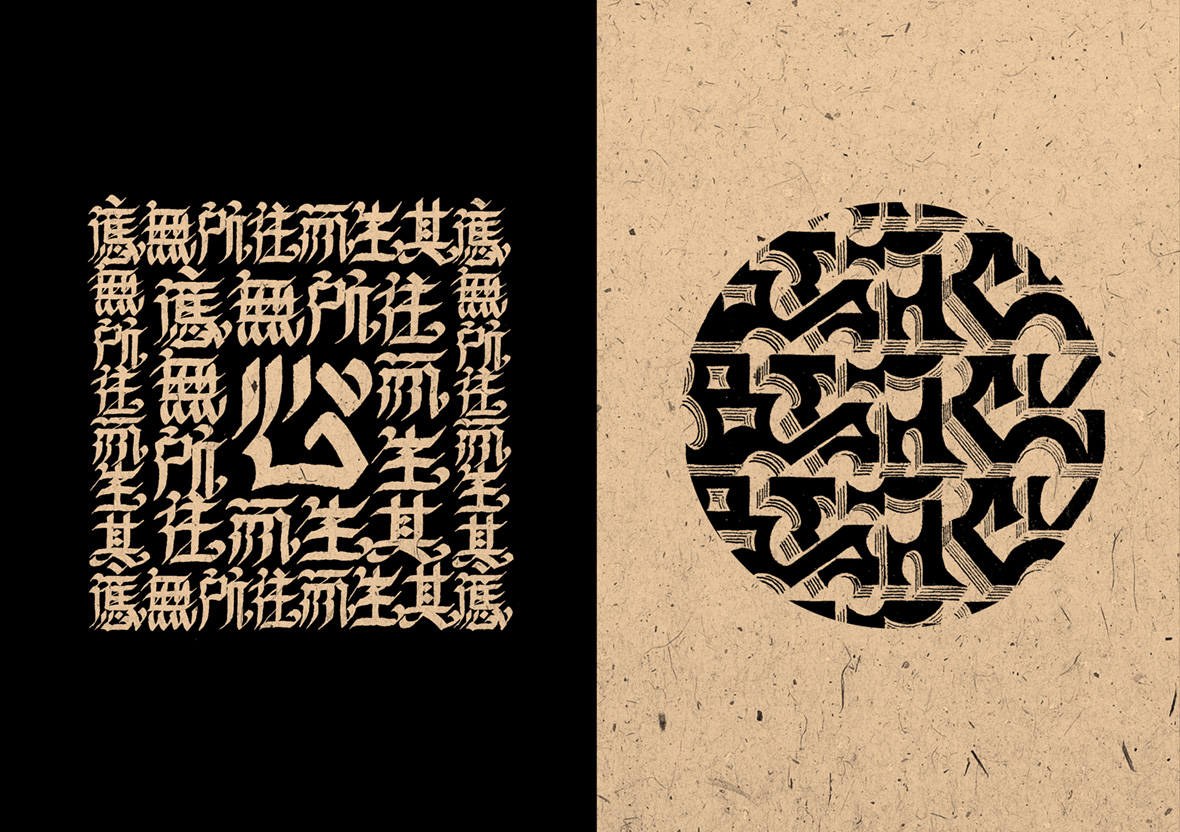
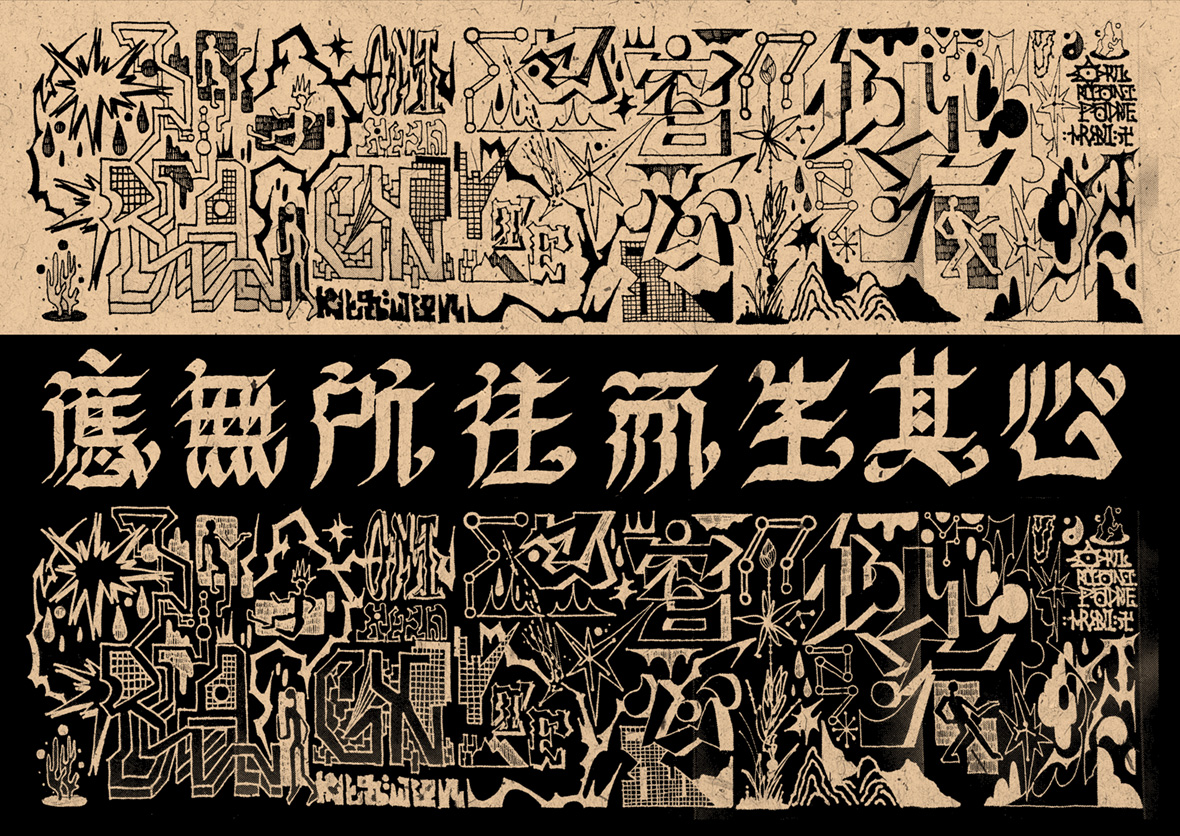
When it comes to calligraphy, Zhao now mainly writes in Chinese, although he originally started by writing in English here too. “It’s different from graffiti,” he explains. “There are too many details in Chinese characters to use in graffiti, but I’m working on making it happen.” His calligraphy often concerns Buddhist mantras and sometimes it’s just random words that stem from his love for text. A lack of legibility can be equally compelling to him. “I’ve studied some religious art and ancient Taoism calligraphy. It can be very similar to graffiti: sometimes you can read it, but other times it just looks like symbols. I find it interesting on many levels.”
现在,Blackzao 主要以中文来创作。“书法与涂鸦不同。汉字的细节太多,比较难用于涂鸦中,不过我现在在努力尝试将其成为现实。”他解释道。他的书法作品通常与佛教经文有关,有时则是他随意写下的只言片语。无法辨别的字体对他来说尤其有趣。“我研究过一些宗教艺术和古代道教书法,感觉和涂鸦非常相似:有时上面的文字清晰可辨,有时却像图画符号一样,我觉得这样的字体在很多层面上都更为有趣。”
Zhao is adamant about uncovering ways to combine the past with the future, the East with the West. (It may have been inevitable that he would find the connection, given that one of his family members is a master of religious art.) “I love using colors I see in Taiwanese streets, whether that’s bold and bright LED lights, or traditional colors like those found in local temples, which are also fluorescent. The stage art for temple puppet shows have very strong and psychedelic colors, and I grew up with that, so it’s very special to me.” He also paints works inspired by traditional East Asian calligraphy landscapes, whether as the focus of a black and white mural, or hidden within a burner, masquerading as a design within the letters’ fill.
Even though he’s continually expanding his visual language, Zhao has remained faithful to his graffiti roots. He still paints throw-ups on interesting structures and conceptual pieces on textured walls: “Taichung is a very chill city, there are a lot of places you can paint in the daytime,” he says. “We also have some very positive writers here.”
Blackzao执迷于融合过去与未来,结合东方与西方。(这或许与他一位家人是宗教艺术学者有关。)“我喜欢用我在台湾街头看到的色彩来创作,无论是大胆华丽的 LED 灯,或是寺庙里那些更传统的荧光颜色。寺庙木偶戏的舞台艺术充满各种强烈的迷幻色彩,我从小在这些色彩的熏陶下长大,所以对我来说有着特别的意义。”另外,传统山水画也对他的创作有所启发,并被他巧妙地运用于黑白壁画、精制壁画(Burner)以及字体填充中。
尽管 Blackzao 不断扩充自己的视觉语言,但他从未放弃过涂鸦。时至今日,他仍然很喜欢到特别的建筑上快速涂鸦(Throw-ups),在充满纹理感的墙壁上创作概念性的作品,但现在的作品会比他年少时的涂鸦要复杂得多:“台中是一座慢节奏的城市,白天也可以到很多地方涂鸦。这里有很多特够劲儿的涂鸦艺术家。”
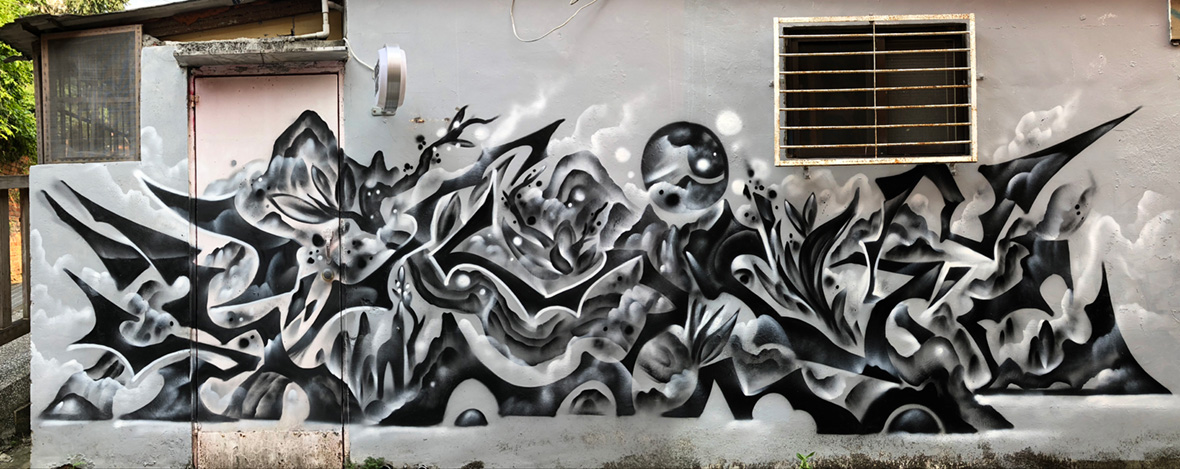
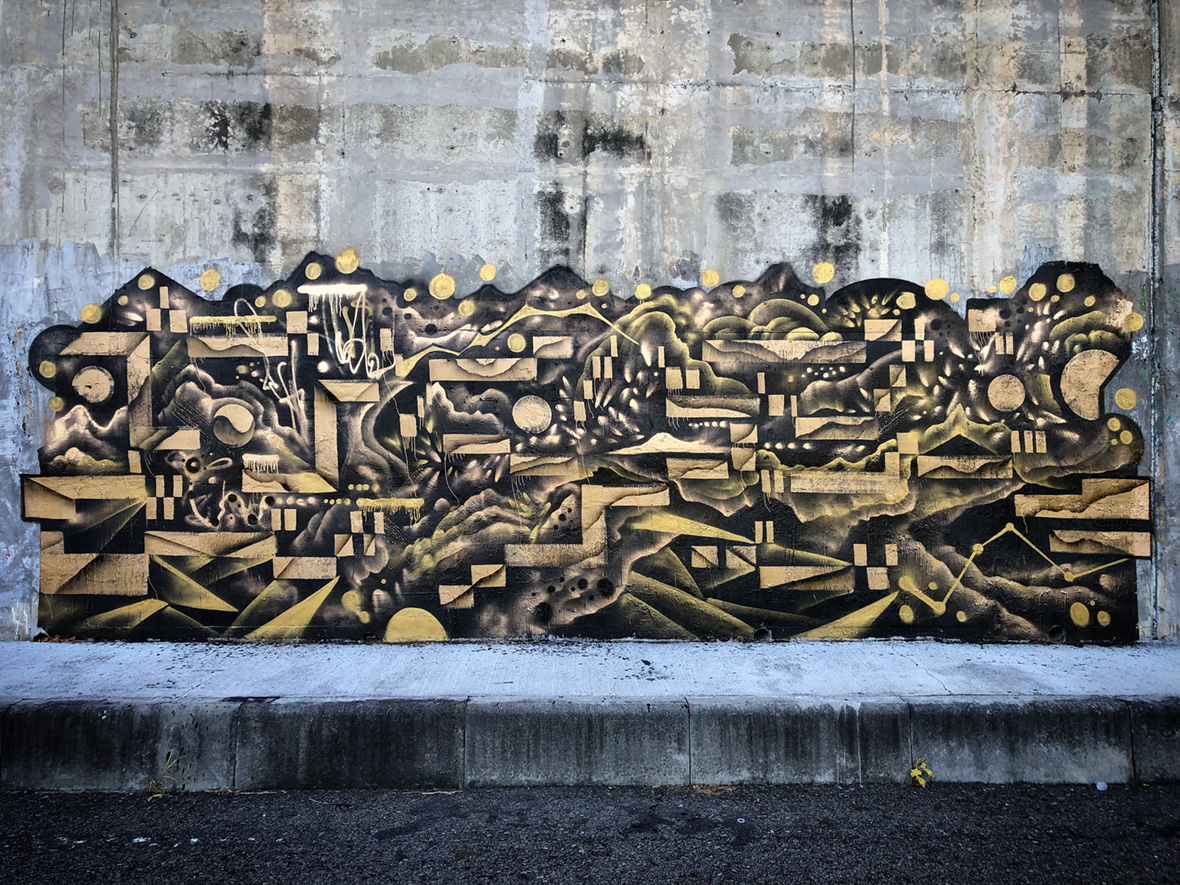
Like our stories? Follow us on Facebook and Instagram.
Instagram: @blackzaoart
Contributor: Mike Steyels
Chinese Translation: Olivia Li

